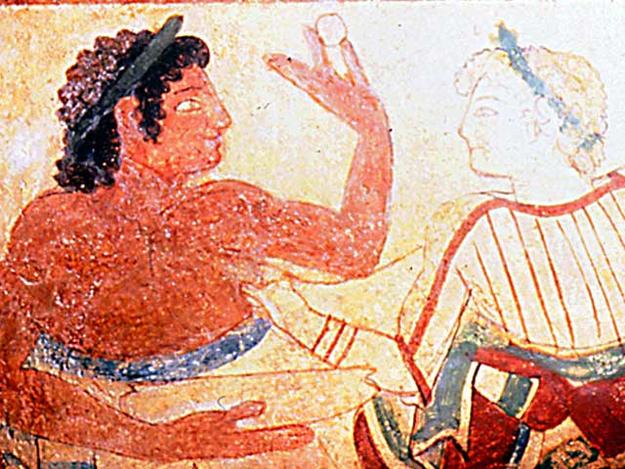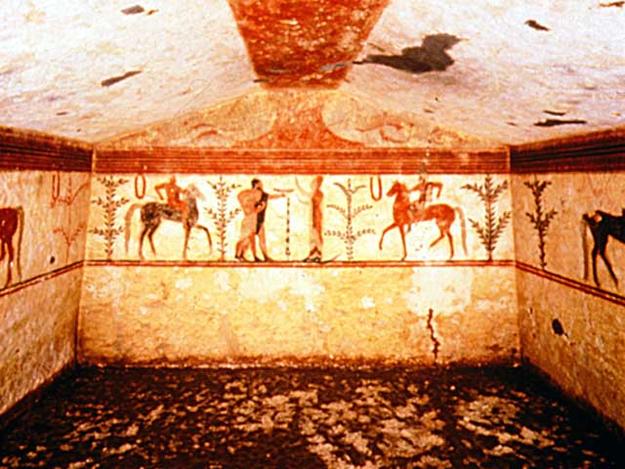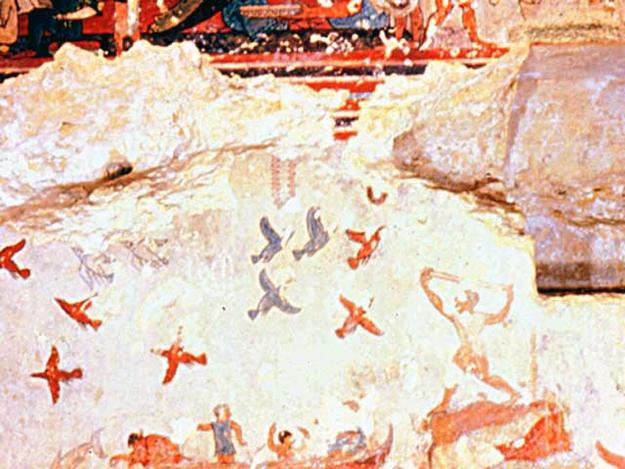Etruscan Painted Tombs of Tarquinia
1998 World Monuments Watch
Birds wheeling above a fishing boat, mounted horsemen, and competing athletes are among the painted scenes covering the walls and ceilings in some 200 Etruscan tombs. These tombs in Tarquinia represent the best evidence of the great pre-Roman painting tradition in the Mediterranean, and although their purpose was to accommodate death, the depictions within bring Etruscan civilization to life. Some of the chambers, all carved out of bedrock, were discovered during the Renaissance and it is thought that Michelangelo derived inspiration from visits to them. Of 50 accessible tombs, only 20 are now on state property and only nine of these can be visited. One key to restoration and improved interpretation is the public appropriation of the land in which all of the tombs were constructed. Concurrently, problems of humidity need to be addressed. Once frescoes are repaired, transparent barriers, low-heat lighting, and climatic monitoring systems need to be installed.
Since the Watch
Following Watch listing in 1998, research showed that the issue of humidity could be adequately addressed with a system of glass barriers and carefully selected lighting that allowed the interiors of the tombs to be viewed by visitors. In 2004 the Etruscan Necropolises of Cerveteri and Tarquinia were inscribed on the World Heritage List. ICOMOS found excellent supervision and monitoring at both sites. Since the time of the 1998 Watch, the number of tombs that can be visited has grown from nine to 20.



